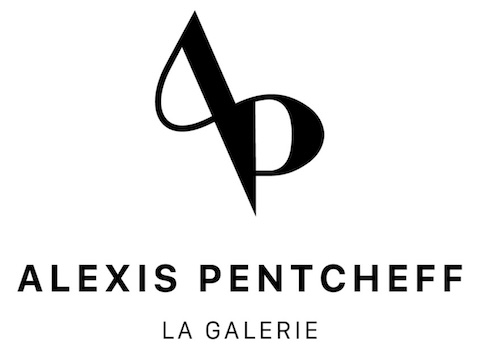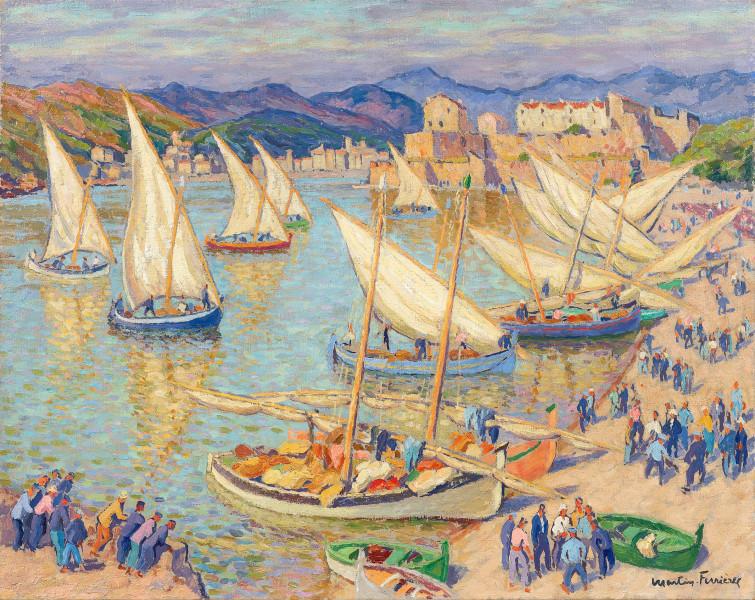Collioure, un retour de pêche au soleil
Oil on canvas, signed lower right.
65 x 81 cm
Provenance :
Artist's studio
Estate of Cyrille Martin
Galerie Alexis Pentcheff
Private collection, France
Exhibition :
Jacques Martin-Ferrières, Intimité et Horizons, Galerie Alexis Pentcheff, Marseille and Galerie Maket, Paris, November 26 - December 23, 2020, reproduced in the exhibition catalog under no. 90.
THE SAILS OF COLLIOURE
For Jacques Martin Ferrières, painting Collioure is something of a family tradition. His father Henri Martin was a regular visitor to the little village, which he discovered through his childhood friend, the painter Henri Marre. In 1923, he bought a house there and visited it every summer until the outbreak of war, leaving Labastide-du-Vert, his village in the Lot, in July to head a little further south, to the little port that the Fauves had adored. Like his father before him, Martin-Ferrières is above all interested in the harbor fervor that distinguishes Collioure. Both artists made it a significant motif in their work. Life in this small port on the Côte Vermeille is punctuated by anchovy fishing, which takes place at night. All night long, the boats drift with their nets or, using light and striking the water, attract schools of fish, which they encircle to catch. Back on the shore, the crews were not done with their work, since once the boats were dry, the fish still had to be sorted, weighed and transported in baskets to the market, while the long nets were left to dry on the ground. With each net measuring over one hundred and fifty meters, the beach was almost entirely occupied. From the shore, Martin-Ferrières was a keen observer of all these operations.
Trawlers had not yet replaced the elegant Catalan barques, and the painter could see the large Latin sails sail away into the open sea in the evening, only to return laden in the early hours of the morning, having spent the night at sea. The artist would watch for the fishermen to come ashore and unload their catch. The folded sails awaited the next departure out to sea, while the weighing was carried out directly on the shore, an attraction that excited onlookers.
The canneries would then take over, gutting the fish, salting and packing it before it could travel all over France and beyond with the renown it enjoys today. From his father's technique, Martin-Ferrières sometimes borrows the vibrant touch that flickers in the light, as he does here to distinguish reflections on the water. The sails throw their large canvas triangle into the air, standing out clearly against the mountains, while inverted, it is diluted on the surface of the water, broken up into small, pulsating fragments. The bird's-eye view allows us to observe the scene from a wide angle, so as not to lose any of the early-morning bustle, the spectacle that began at sea and continues on the quayside. The ochre and blue mountains close the composition, giving the basin the air of a small theater of water and light.

